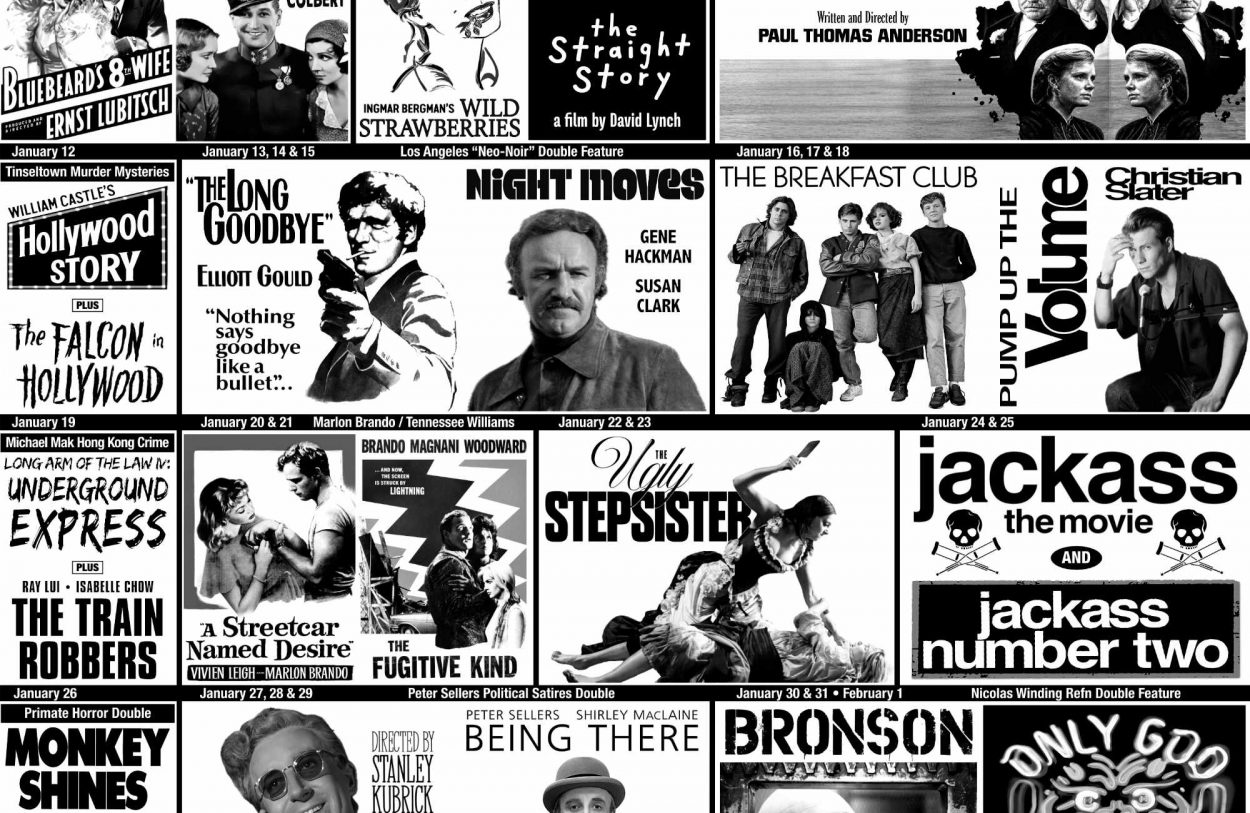In an alternate universe, this article would be the third time in almost as many weeks that I would have had the pleasure of inviting you to a James Dean film at the New Beverly Cinema. Unfortunately, this is not an alternate universe. We exist in the one where Dean died before he was able to play the role of Rocky Graziano in Somebody Up There Likes Me (Robert Wise, 1956). As tragic as it is that we did not experience James Dean in a boxing film, our experience was not lessened by his absence. Somebody Up There Likes Me stands out as a film that introduced the world to the cinematic excellence of Paul Newman, in addition to a cadre of other surprising appearances that will make your head explode!
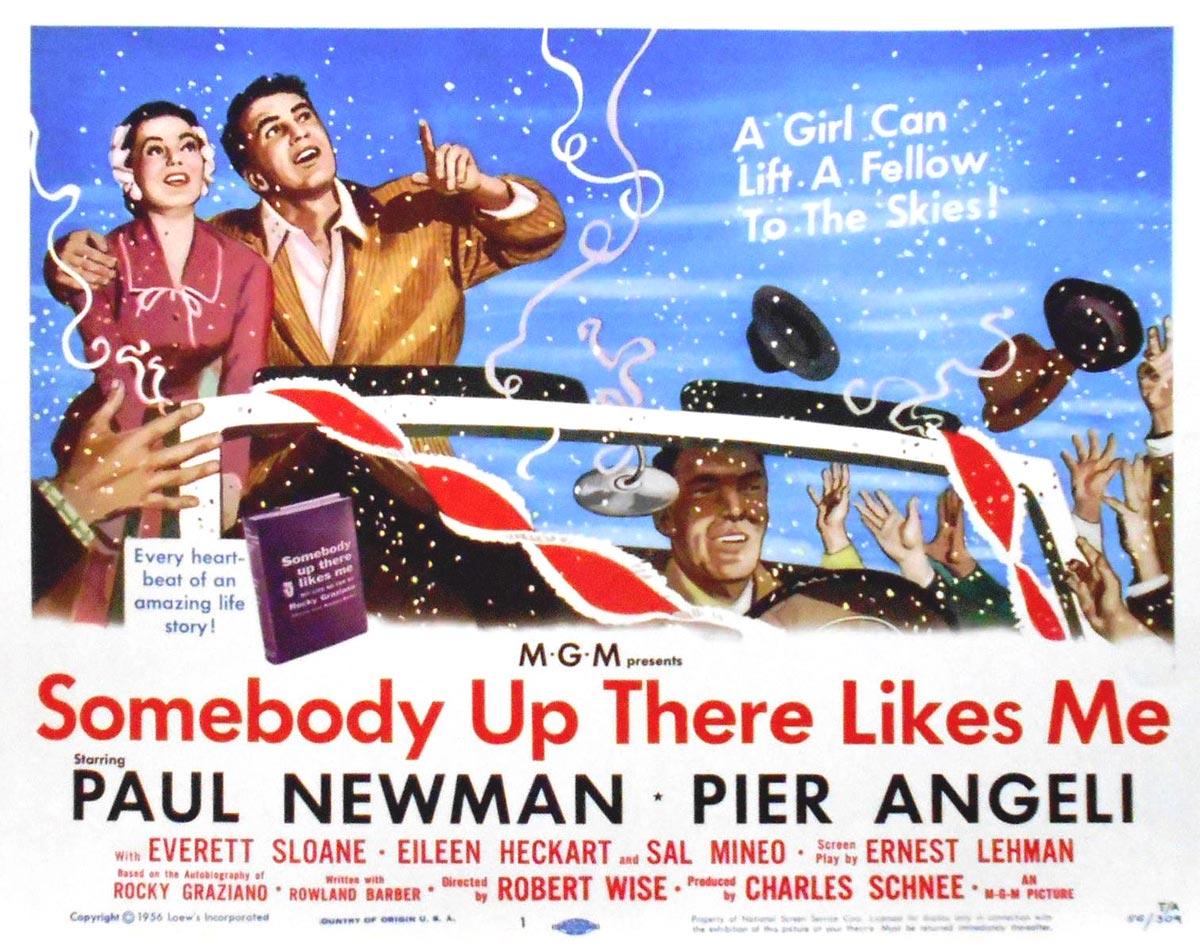
Somebody was the first big screen appearance of one Steve McQueen. As the story goes, director Robert Wise saw Steve on the streets of New York and instantly cast him as a street tough. Watching McQueen’s unassuming but vigorous energy in this breakout role is extremely satisfying. He plays Fidel, one of Rocky (Paul Newman)’s street gang pals along with Romolo (Sal Mineo). To see these three men (Rocky, Fidel & Romolo) palling around together, committing petty theft and assorted tomfoolery in 1950s NYC is fun almost to the point of being pornographic. As Graziano says of that time in his life, “We stole everything that began with an ‘a’ – a piece of fruit, a bicycle, a watch, anything that was not nailed down.”
Another uncredited and striking performance can be awarded to scumbag Frankie Peppo, played by the ridiculously young and handsome Robert Loggia. Like McQueen, Somebody was his breakout performance and boy does he give it his all. If you thought he was a son-of-a-bitch in 1997’s Lost Highway (David Lynch), you should check him out in 1956! To add to this list, the young girl who plays Rocky’s daughter later on in the film would grow up to be actress Angela Cartwright. And that detective you see bouncing around the film periodically? Up until Somebody, Frank Campanella had only worked in television. This film was also his jumping off point.
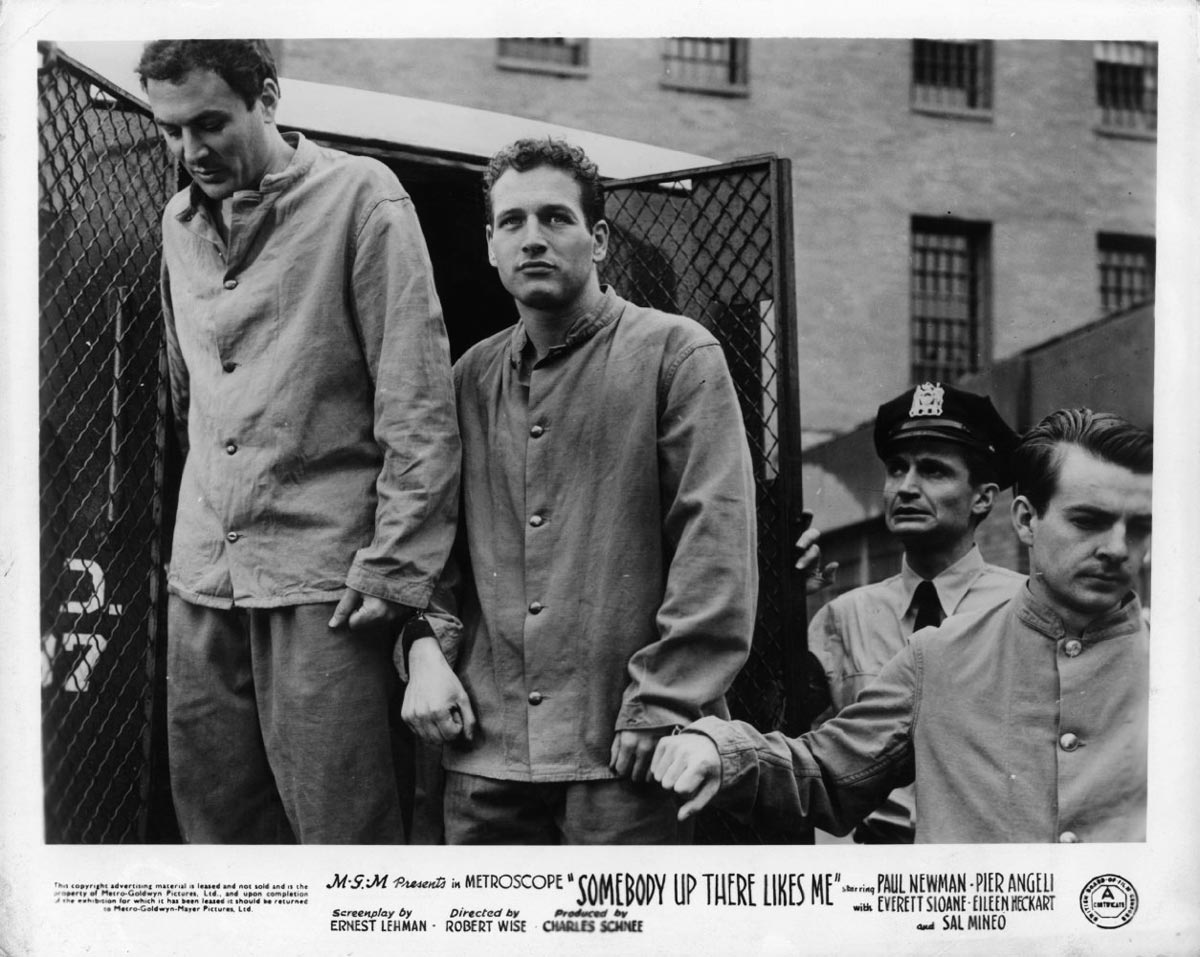
Paul Newman had only done one feature film before being cast in this Robert Wise-directed biopic. The Silver Chalice (Victor Saville, 1954), while not a critical success, saw Newman play opposite actress Pier Angeli before the two young stars were subsequently cast as romantic leads in Somebody. When James Dean (who the property was originally bought for) died suddenly, Wise borrowed Newman from Warner Bros. Based upon Graziano’s autobiography, the film examined the boxer’s life and personality, focusing on his evolution from teen hoodlum to adult troublemaker to exceptional athlete and family man.
As a young actor, Newman was aware that this was a meaty entrance into film and took advantage of it. Extremely dedicated to the role, he spent a generous amount of personal time with Rocky, playing cards with him, going out at night and getting to know him. Mastering Rocky’s thick New York accent and physical mannerisms, Graziano said after the film’s release that “[Paul Newman] plays me so good, I think he’s my brudda!” Newman even took Graziano to acting class with him at the Actor’s Studio. At the point that Somebody Up Here Likes Me was made, Graziano was no longer fighting but was making television appearances and was known to be of good humor and an entertaining sports personality. Paul asked Rocky after class if he might be interested in taking some classes himself. Rocky’s answer? “What for? They’re all trying to talk like me!”
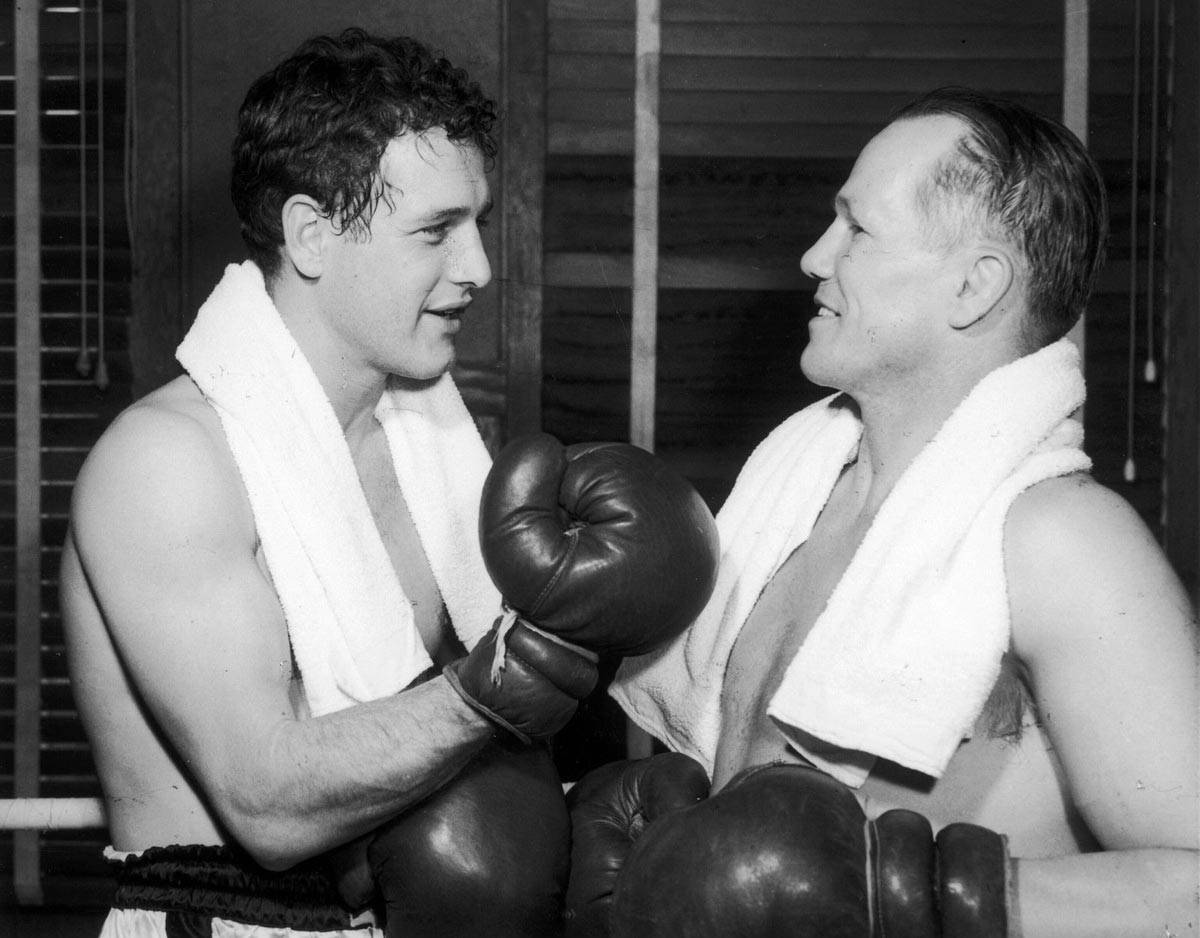
Robert Wise had experience making films in this genre. Previous to Somebody, he had made one of the best boxing movies ever committed to film – The Set-Up (1949) with Robert Ryan. He knew how they should be shot, how they should be paced and how they should be narratively structured. Wise was a directorial genius with a particular gift when it came to exploring this topic’s more challenging aspects. Historically, scores of films on prize-fighting have been made, from Mark Robson’s The Harder They Fall – released the same year as Somebody Up There Likes Me – to 2015’s Creed (Ryan Coogler). Scorsese’s violent and emotionally raw Raging Bull (1980), based upon real-life boxer Jake LaMotta (another NY teen hellion and lifelong friend of Rocky Graziano) was nominated for 8 Academy Awards. There is something undeniable about this topic – it hits folks right in the solar plexus and keeps ‘em coming back for more.
What exactly is it about boxing films that audiences find so attractive? Is it the violence? The brutal takedowns? Is it the fact that it is a sport centered upon the very primal instinct of competing for physical supremacy? It could be all of these things and it probably is at least a little bit. But the most significant aspect of this genre is its ability to deconstruct the “tough guy” image.
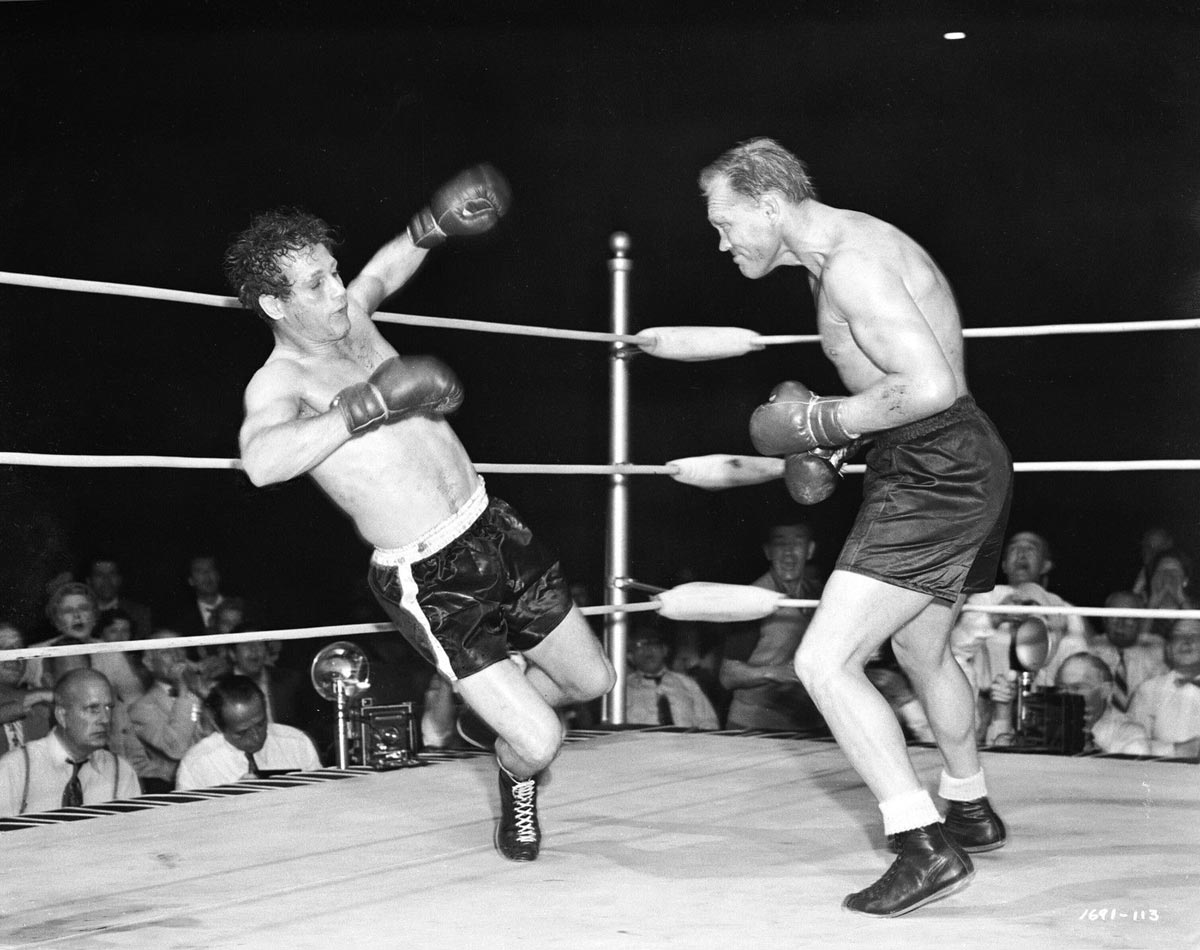
Boxing movies are incredibly important films. By their nature, they platform the most macho and manly of men battling each other, their masculinity bumped up to eleven. As such, these films also flip the script. The fights serve as an epidermis for the musculature of the narrative. This prizefighter-as-protagonist and his journeys in and out of the ring serve as the casing for the primary conversation: these films examine the idea that “tough guy” masculinity is unstable and a socially constructed fallacy. Just as concepts of delicate femininity or gendered “appropriateness” are human-based creations, the idea that a man is not sensitive, is not deeply connected to a set of fragile internal faculties, is false. Boxing films are emotionally resonant.
As American society has managed to create a highly gendered atmosphere, we end up in situations where extreme sports like boxing or wrestling are considered Extremely Manly Activities. It is films like Somebody Up There Likes Me, Body and Soul (Robert Rossen, 1947), Here Comes Mr. Jordan (Alexander Hall, 1941) and modern works like Fat City (John Huston, 1972) or Rocky (John G. Avildsen, 1976), that strongly depict the fight against the Traditional Macho Dude masculinity narrative. These lead characters are not only physically broken and beaten within the film, they are spiritually and emotionally shattered. While other film genres may investigate this, none so obviously as the boxing film. Men in boxing films manifest their emotional pain and internal fragility visually within the ring. While we may watch them struggle throughout the feature (and perhaps they are even the consistent champion) the fact that the audience spends the entire feature watching them get pulverized and their loved ones in various states of trauma is truly significant.
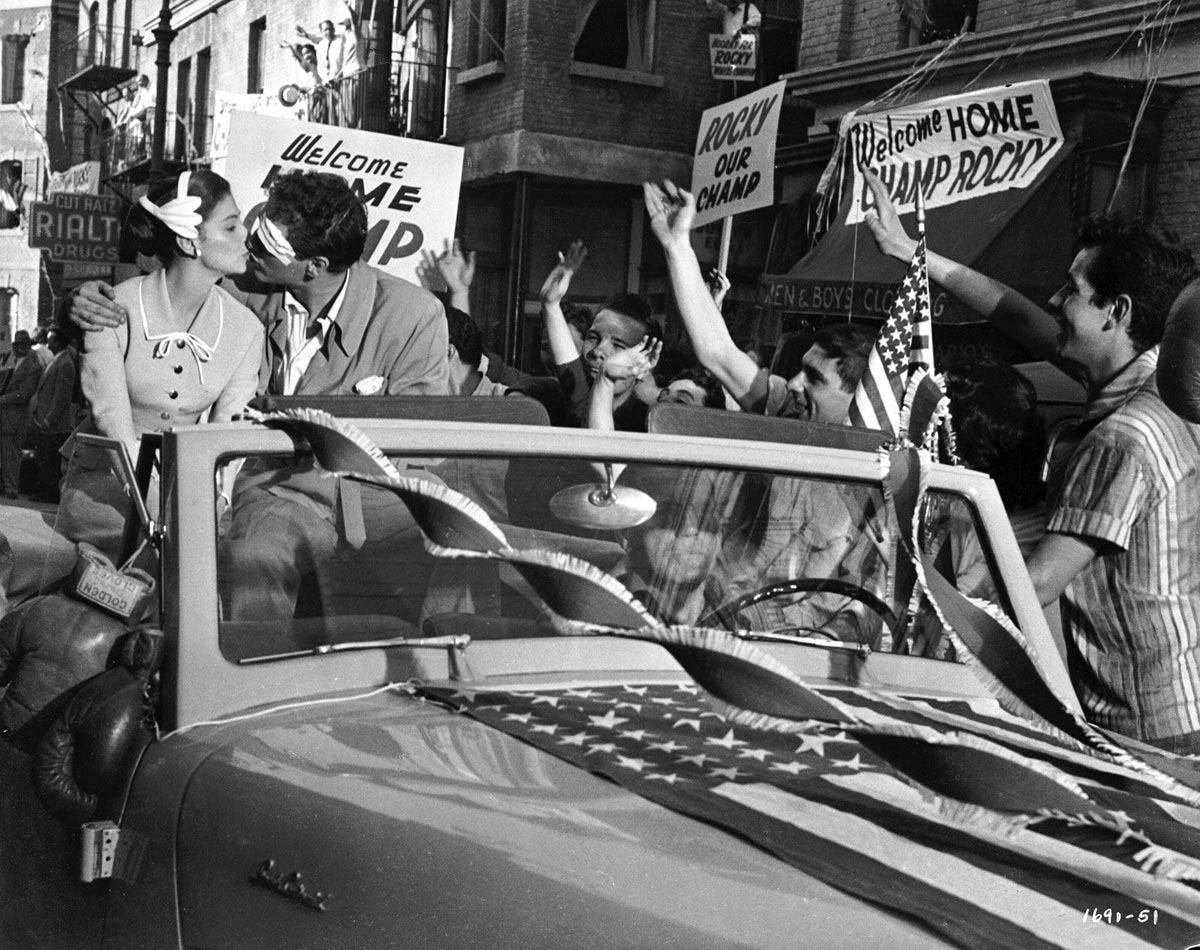
The visual style of Somebody Up There Likes Me only emphasizes its richness. It kicks you in the teeth from the very first shot. While it may not be considered a film noir, it’s shot like one, winning the Academy Award in 1956 for best cinematography, one of two Oscars Somebody nabbed that year (the other in Art Direction). Cinematographer Joseph Ruttenberg, known for his visual dynamism on films like Dr. Jekyll and Mr. Hyde (Victor Fleming, 1941), Mrs. Miniver (William Wyler, 1942) and Gaslight (George Cukor, 1944), did stunning work on Wise’s film. Ruttenberg said, “I like working in black-and-white because you’ve got to put the values where you want them. With color, the values are already there. It’s less creative, I think, working with color…[u]nnecessary shadows and crowded compositions irritate me. The eye is attracted to light and dark and, unless it suits the story you’re telling, all the clutter is indicative of someone showing off.”
Somebody Up There Likes Me is an incredible film. While boxing films and biographical films may seem like old hat these days, this work is an original. Each actor and actress, from Pier Angeli to Sal Mineo added something real and totally unique. And it would be unkind if I were not to mention the staggering relationship evolution in the film between Rocky and Romolo. As you may have seen in some of the other works that the New Beverly has been playing for the Sal Mineo fest, this young man was a real treasure. Somebody Up There Likes Me launched careers like ships, but in this film Mineo took a supporting role and him feel central to the story. Mineo is absolutely unforgettable in the scene with Rocky, talking about his fruit stand. Bring tissues.
Whatever reason you decide to attend Somebody Up There Likes Me – boxing fan, Paul Newman-aholic, Pier Angeli-ophile, Robert Loggia-ite, Steve McQueen acolyte, just down for a kick ass flick, you will enjoy this picture. I promise you that. It’s a rare work and a wonderful film. Another reason to love the New Beverly.
Somebody Up There Likes Me screens May 17 & 18.


